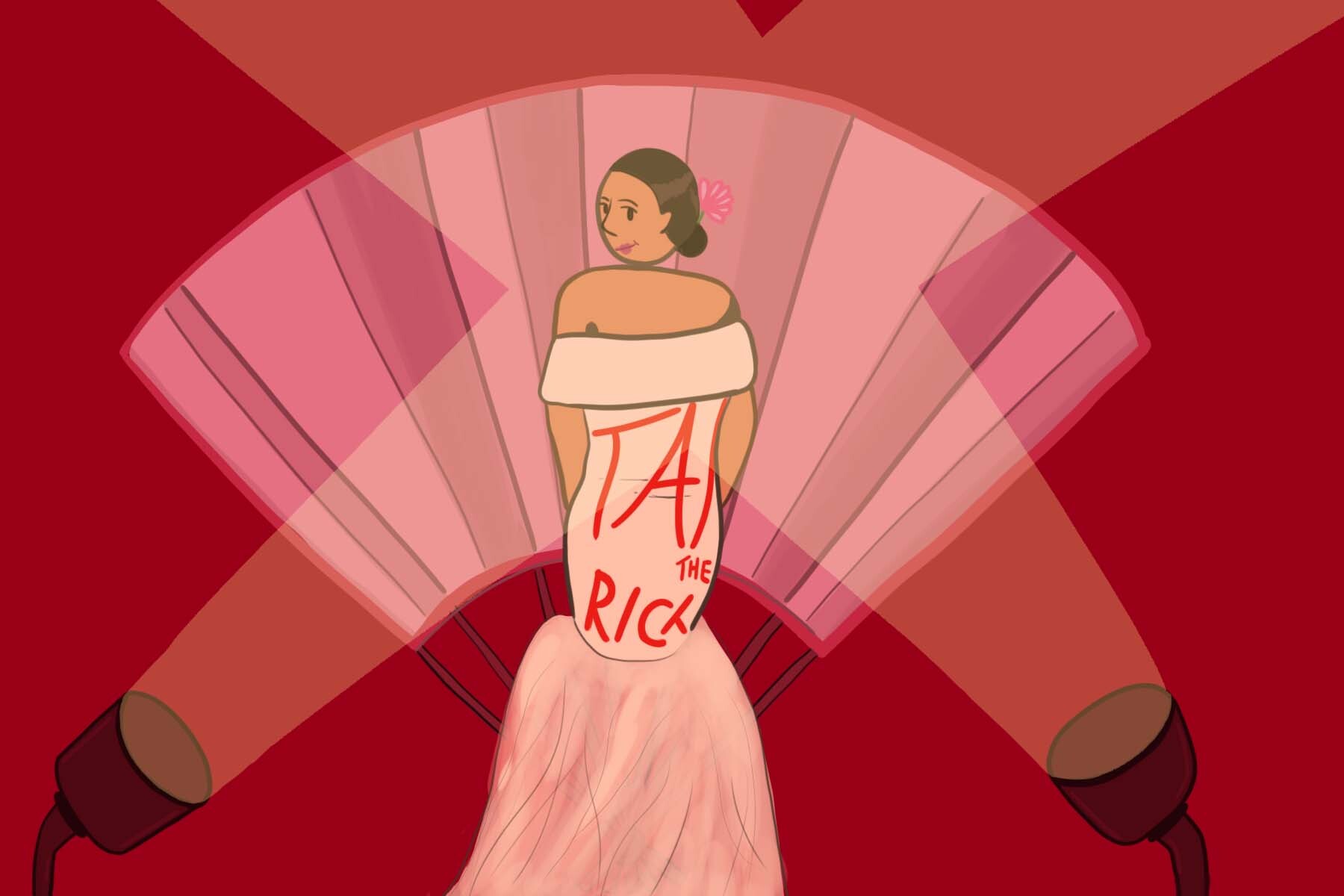Progressive politician Alexandria Ocasio-Cortez (or AOC) made quite a stir a few weeks ago at the Met Gala. She donned a pale white dress with a simple phrase scrawled in red: “Tax The Rich.” This phrase summarizes much of Ocasio-Cortez’s platform. She has long fought for major economic reform, with massive government spending funded by the taxation of the uber-wealthy, a class known for not paying their fair share. The theme for the gala, “American Independence,” implies a focus upon patriotic activism; AOC met the theme, her fight for wealth equality evoking the American values of equality.
Still, the response has been polarizing. Some have praised Ocasio-Cortez for her audacity, donning a bold dress at an event full of elites. However, much of the discourse is criticism, claiming the outfit is “performative activism.” Detractors argue this dress does get not things done. It is a mantra being shared, but not much more. People want substantial policy to go with the idea, not just the idea. AOC has defended her action, writing on social media: “The medium is the message.”
This debate leads to the question of performative activism — essentially, what qualifies as performative activism? It has been a catch-all phrase for symbolic actions supposedly meant to further social movements. Accusations of performativity have become increasingly common in the past year, which is only natural in a year of massive social and political change. The notion of performativity in this era carries a negative connotation: People are simply acting, or performing, for the sake of credibility. Performing equates to inauthenticity, a detachment from reality — in other words, not actually doing anything. However, performative activism can be beneficial. It can incite conversation where there is little. In that case, it is perhaps the most desirable way to spark change at a given moment — the first domino in a set leading to a more tangible revolution.
The “Tax the Rich” dress works because it brings light to its message. Google searches for the elusive term surged incredibly after the Gala, showing that a simple action sparked considerable interest in the topic. Certainly, most of these searchers looked up the phrase with the dress specifically in mind — most people love fashion and celebrities, not economic justice — but along with numerous tabloids about the elusive fit, they received recommendations for articles discussing taxation and inequality. The internet could lead unaware, gossip-driven users down a political rabbit hole (what it does best). Apolitical people are the most open to change, like a blank slate ready to be written on. They read these ideas objectively and could soon become passionate about their execution. The interest generated by a bold action promotes change.
Performative activism like Ocasio-Cortez’s works because it is accessible and exciting. It does not bombard viewers with pages of complex theory and policy. It states an idea or goal in a bold manner, a splash on the blank slate of apolitical people. Social movements do not come from nothing. Allies do not just emerge with the drive to take action; exposure is required. The “tax the rich” dress appeals to the unaware due to its shocking bluntness. The drama ropes in viewers as any great performance should. Performances may be inauthentic, but they are dramatic. People are driven by the drama. They tell friends and family. The movement grows.
Still, there are examples of this performativity failing miserably. A popular example occurred last summer in the wake of the Black Lives Matter protests. Congressional Democrats were photographed taking a knee in the chambers of the Capitol, a sign of respect for the death of George Floyd and the movement his death helped launch. Their gesture was panned across the political spectrum, a shameless photo op for the sake of virtue signaling. What is the difference between this occurrence and AOC’s work? What designates performative activism as effective or ineffective?
The main difference between these two examples is the place and time in which they occurred. Performative activism works when it comes at the outset of social movements, bringing familiarity to unfamiliar ideas. Ocasio-Cortez made her statement in an environment where the issue of taxing the rich was less mainstream, whereas, in Congress, the civil rights movement was already in full swing.
Ocasio-Cortez wore her dress criticizing the rich while attending an event full of rich people, and this enriches her message. This juxtaposition was the crux of many criticisms, claiming hypocrisy. She demonizes the elite while flirting with them. However, this gesture works because it makes the people in the room uncomfortable, intruding on their uptight lifestyles. Many of those in attendance remain unaware of global issues. They party while a pandemic rages and a protest occurs outside their red carpet. They truly live in a bubble. Ocasio-Cortez’s actions are a sharp needle to that bubble, bringing reality to celebrity and paparazzi culture. The demographic is ignorant, and thus AOC becomes a trendsetter.
To contrast Ocasio-Cortez’s dress as the inception of a movement, Congress’s kneeling reflects coat-tailing. The campaign for racial justice was already ongoing. People had protested and fought. This “activism” was an expression of solidarity, but no new ground was broken. No bubbles popped. Their actions are just another gesture where gestures are no longer necessary. The goal of Congress at this point was to respond to the demands spurred by the movement. Performative activism has a short lifespan since a performance can only have so much impact. It works at the beginning of a campaign to raise awareness, but reform and/or revolution need to take form eventually.
The distinction between Ocasio-Cortez and her fellow members of Congress serves as a reflection on performative activism. When it comes to encouraging movements and altering the conversation, it is effective. Works of art are examples of “performative activism,” but no one uses the phrase for something like a political satire. Still, they are supposedly frivolous works that bring to life mature topics an audience may not be aware of. The dress is no different in its use of popular celebrity culture as a platform.
However, if this dress were to come out in a context where the idea of taxing the rich was more mainstream, where countless companies had already released statements calling for their own defunding and people participated in lengthy protests, the backlash against AOC would be far more pointed and consistent (this is not to say her, and her actions, are immune from critique). Ocasio-Cortez is among the few voices speaking up for immense regulation upon the wealthy, though the movement continues to grow. Thus, her performances have more value for the current moment, but will lose that value over time as the movement continues to evolve and thrive.
The main lesson is that performative activism is a strong tool when used in the right context. We should adopt it more often to shed light upon issues that are rarely discussed. To make a bold or shocking action that provokes conversation. However, it should not be present when a movement is already in full force, as it will not work to push the movement forward. It is also important to think of the environment. Are the people in the environment ignorant or dismissive of these issues, like those at the Met Gala or many viewing the event’s aftermath? Or is it just a show? These are all factors to consider. As the congresswoman wrote, the “medium is the message.”

















